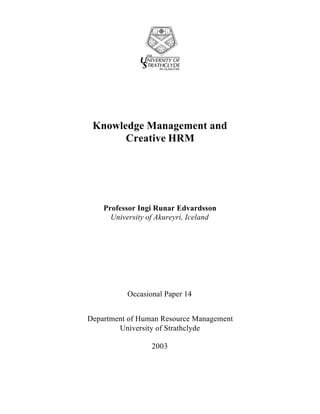This document discusses the relationship between knowledge management and human resource management. It provides background on knowledge management and outlines key human resource management practices that are vital for managing knowledge, such as recruitment and selection, training and development, performance management, and compensation. The document argues that knowledge depends on people and effective human resource strategies are needed to create and share knowledge within organizations.



















